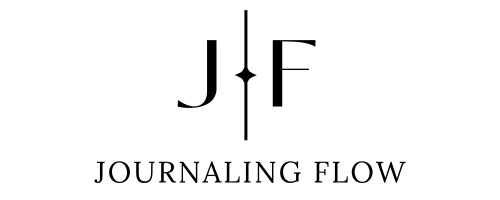
Anxiety can feel overwhelming, but journaling is a simple and effective tool that can help you regain control of your thoughts and emotions. By putting pen to paper, you can process your worries, challenge unhelpful thought patterns, and cultivate a sense of calm.
In this post, we’ll explore the role of journaling in managing anxiety and share specific journaling methods to help reduce stress and promote emotional well-being.
How Journaling Helps Manage Anxiety
Journaling offers a safe space to explore your emotions without judgment. Here’s how it helps:
- Externalises worries: Writing down anxious thoughts can reduce their intensity and make them feel more manageable.
- Promotes self-awareness: Journaling helps you identify triggers and patterns, making it easier to address them.
- Encourages mindfulness: Focusing on the present moment through journaling can interrupt anxious spirals.
- Facilitates problem-solving: Reflecting on your concerns often reveals solutions or new perspectives.
Journaling is an accessible and empowering tool for anyone looking to reduce anxiety and foster emotional resilience.
Journaling Methods for Managing Anxiety
1. Freewriting to Release Worries
Freewriting allows you to release anxious thoughts without overthinking. Write continuously for 5-10 minutes about what’s on your mind. The goal isn’t to organise or analyse—just let your worries flow onto the page.
How It Helps: Freewriting externalises your fears, reducing mental clutter and bringing clarity to your emotions.
Exercise: Write a stream-of-consciousness entry starting with, “What’s been worrying me lately is…”
2. Gratitude Journaling
Gratitude journaling shifts your focus from anxiety to positivity. By reflecting on what you’re thankful for, you can reframe your mindset and reduce stress.
How It Helps: Gratitude journaling counteracts negative thought patterns, promoting a sense of balance and well-being.
Exercise: Each day, write down three things you’re grateful for, no matter how small.
3. The “Worry Dump” Technique
A worry dump is a dedicated space in your journal to release all your fears and concerns. After writing them down, categorise them into “Things I Can Control” and “Things I Can’t Control.”
How It Helps: This method helps you focus on actionable steps for the worries you can address while letting go of the ones you can’t.
Exercise: Divide a journal page into two columns: “Within My Control” and “Out of My Control.” Write your worries under each heading and brainstorm possible actions for those you can influence.
4. Positive Reframing Through Journaling
This method involves challenging anxious thoughts and reframing them into more balanced or optimistic perspectives.
How It Helps: Positive reframing helps you break the cycle of negative thinking and replace it with constructive insights.
Exercise: Write down an anxious thought, then answer:
- “What evidence supports this thought?”
- “What evidence challenges this thought?”
- “What’s a more balanced way to view this situation?”
5. Guided Prompts for Anxiety
Using specific prompts can help you explore your anxiety and uncover helpful insights.
Prompts to try:
- “What’s one small thing I can do today to ease my worries?”
- “What’s a recent moment when I felt calm, and what contributed to it?”
- “How would I comfort a friend feeling the way I do right now?”
6. Visualisation Journaling
Visualisation involves creating a calming scenario in your mind and describing it in your journal. This can transport you to a place of peace and relaxation.
How It Helps: Visualisation reduces anxiety by engaging your imagination and shifting your focus to something soothing.
Exercise: Write about your ideal calm place, describing the sights, sounds, and sensations in vivid detail.
10 Prompts to Support Journaling for Anxiety
- “What’s the biggest source of anxiety in my life right now, and how can I approach it?”
- “What physical sensations do I notice when I’m feeling anxious, and how can I soothe them?”
- “What’s one past challenge I overcame, and what does that say about my resilience?”
- “What’s one thing I can do today to prioritise self-care?”
- “What thoughts or situations tend to trigger my anxiety the most?”
- “How can I practice more self-compassion when I’m feeling anxious?”
- “What would my future self tell me about this moment of worry?”
- “What activities or habits help me feel calmer and more grounded?”
- “How do I want to feel tomorrow, and what steps can I take to get there?”
- “What’s one positive affirmation I can repeat when I’m feeling anxious?”
Tips for Making Anxiety Journaling a Habit
- Keep it simple: Start with just a few minutes a day, focusing on one method or prompt.
- Choose a calm environment: Journal in a quiet space where you feel safe and comfortable.
- Be consistent: Integrate journaling into your daily routine, such as in the morning or before bed.
- Revisit entries: Reflect on past entries to track your progress and identify patterns.
Conclusion: Empower Yourself with Anxiety Journaling
The role of journaling in managing anxiety is undeniable. By using techniques like freewriting, gratitude journaling, and positive reframing, you can reduce stress, gain clarity, and build emotional resilience. Journaling offers a private, judgment-free space to explore your feelings and take actionable steps toward a calmer mind.
Start your journey today with just a few minutes of writing, and experience the transformative power of journaling for anxiety.
Want more journaling inspiration?
Get exclusive prompts, techniques, and insights straight to your inbox.
Join the Journaling Flow newsletter today!

